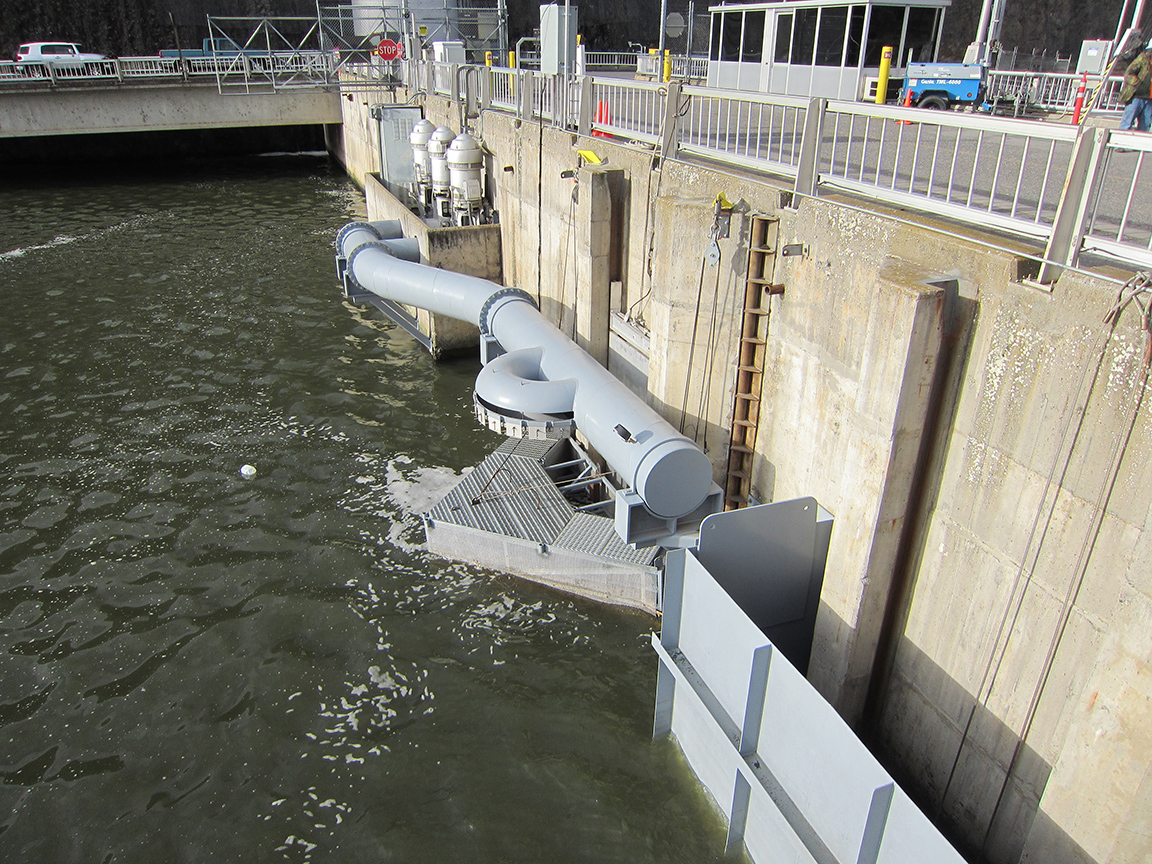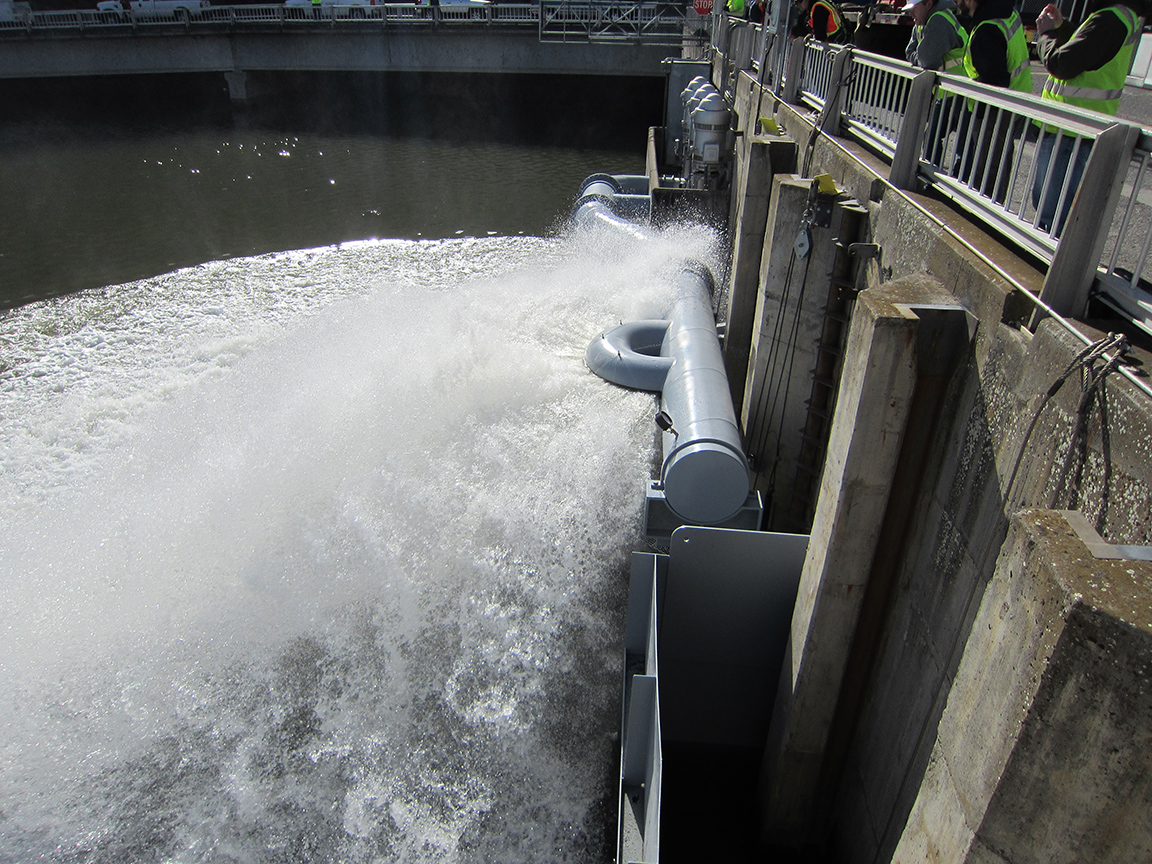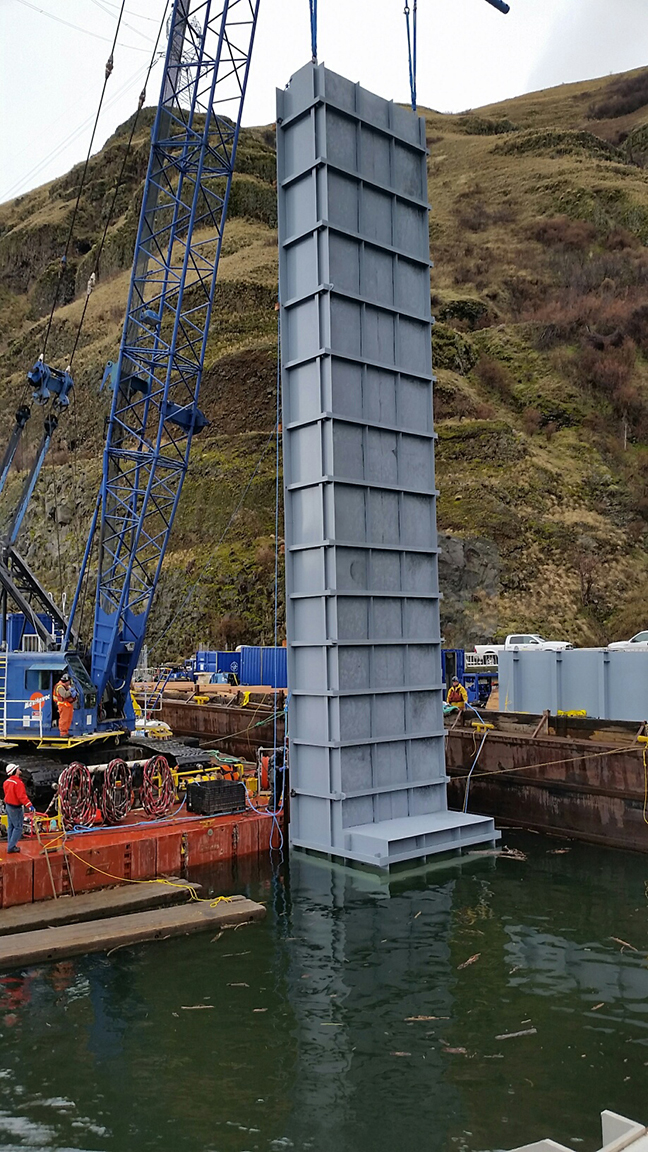The Corps had previously undertaken a study to determine alternatives to resolve elevated fish ladder temperatures at Lower Granite, but hadn’t received funding to pursue a solution. Recent thermal barriers to adult fish migration led to funding for construction of two permanent “intake chimneys” at Lower Granite to cool the adult fish ladder, plus the adult fish trap built into the fish ladder.
The permanent intake chimneys are large vertical structures bolted to the upstream face of the dam.
There are two chimneys, one on either side of the upstream end of the fish ladder where adult fish normally continue their upstream migration into the forebay in the reservoir. They both draw water from about 66 to 70 feet deep, depending on forebay elevation.
1. Supplemental water intake chimney - One intake chimney covers the pipe entrance that provides supplemental water to the fish ladder at ‘Diffuser 14’ starting about 150 feet downstream from the top of the ladder. It also routes water to the adult fish trap.
2. Pump intake extension chimney - A second chimney was constructed to extend an existing pump intake. This pump intake provides water to the upstream end of the fish ladder by spraying cooler water in a circular pattern to cool both the immediate forebay area and the fish ladder itself.
The two intake chimneys provide a permanent way to pull cooler water from deep in the reservoir into both the Diffuser 14 pipe and the pump intake. As a result, beginning in 2016, cooler water from approximately 70 feet deep in the dam forebay will now supply both the fish ladder and the adult trap during hot summer months.
Previously, in 2014 and 2015, prior to installation of the two permanent intake chimneys completed in early 2016, the Corps rented pumps temporarily during the summer months to bring cooler water up from deep in the reservoir to benefit operation of both the fish ladder and the adult trap.
The Corps also modified Lower Granite powerhouse and spillway operations to enhance attraction of adult fish to the ladder. Powerhouse operational changes included changing which turbine units were operated. Spillway operational changes included closure of the spillway weir. These manipulations created a cooler water flow profile downstream of Lower Granite to best attract adult salmonids to the fish ladder entrance. This temporary 2014-2015 solution was only partially successful in eliminating the thermal barrier issue. Availability of funding allowed construction of the new permanent solution completed in 2016.
During 2016, monitoring of the completed permanent improvements will document the system’s effectiveness. Monitoring efforts will include use of both tagged fish and temperature sensors. The tagged fish will be monitored to confirm this improvement works as designed to help adult salmon and steelhead continue their migration upstream more expediently through the fish ladder into the reservoir above the dam.
 A pump extension intake chimney provides water to the upstream end of the adult fish ladder. The semi-circular pipe sprays water to cool the fish ladder and adjacent forebay area. U.S. Army Corps of Engineers photo.
A pump extension intake chimney provides water to the upstream end of the adult fish ladder. The semi-circular pipe sprays water to cool the fish ladder and adjacent forebay area. U.S. Army Corps of Engineers photo.
 Circular cool water spray at upstream end of Lower Granite Dam adult fish ladder. U.S. Army Corps of Engineers photo.
Circular cool water spray at upstream end of Lower Granite Dam adult fish ladder. U.S. Army Corps of Engineers photo.
 A supplemental water intake chimney provides supplemental water to “Diffuser 14” starting about 150 feet down from the top of the fish ladder, plus water to the adult fish trap. U.S. Army Corps of Engineers photo.
A supplemental water intake chimney provides supplemental water to “Diffuser 14” starting about 150 feet down from the top of the fish ladder, plus water to the adult fish trap. U.S. Army Corps of Engineers photo.